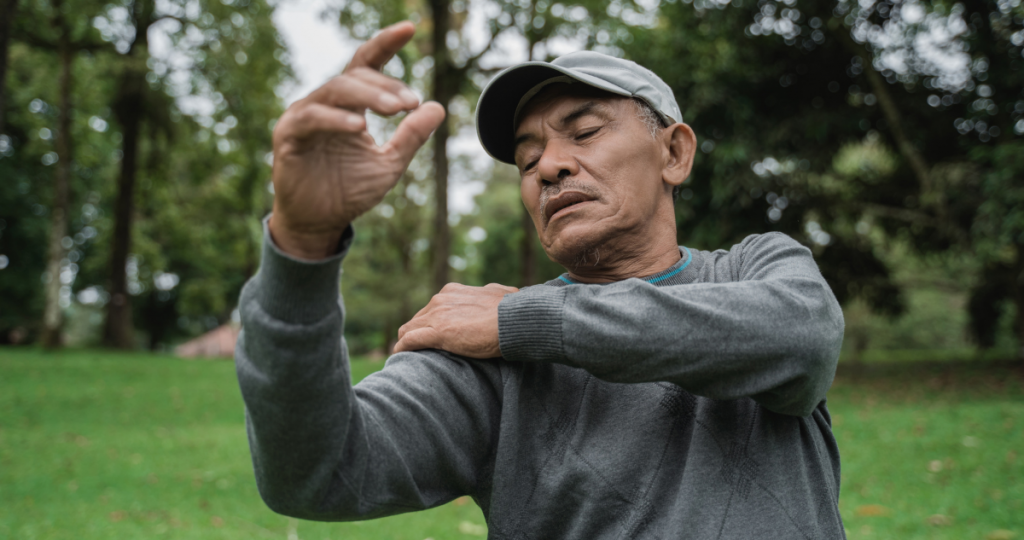
The garden centres are open, life is easing, and many of us are looking to perk ourselves up with colourful displays in the garden. Or perhaps the golf course or tennis court beckons.
But behind the excitement of tending your borders or wrestling with tricky greens, lurks the hidden danger of muscle injuries, and a particularly vulnerable joint can suffer more than most, the shoulder.
The shoulder is an inherently unstable “ball and socket” joint between the humerus (upper arm bone), scapula (shoulder blade) and clavicle (collar bone)
Being a shallow socket, it would dislocate due to gravity or carrying a shopping bag were it not for a small but powerful group of muscles called the rotator cuff, which essentially “suck” the humerus into the socket.
As with all injuries, prevention is the key.
Whilst no one would suggest warming up before gardening, gentle stretches before digging or any lifting or reaching activities, is sensible, and essential pre sporting activities.
Many people worry about looking silly warming up, but it is the best thing you can do to prevent injury.
So, what are the commonest causes of shoulder pain or injury?
A direct fall, particularly with your hand outstretched and to the side can result in a shoulder dislocation, a profoundly painful condition, that requires immediate attention. If this occurs when you are younger, it can often be recurrent and need an operation to strengthen the joint.
In an older person, it can be an isolated event.
Falls can result in fractures to collar bone, and humerus, and of course contact sports can result in a broken collar bone.
One of the most annoying shoulder conditions is a “frozen shoulder” (medically termed adhesive capsulitis), which can present with pain and stiffness in the shoulder, usually resolving in 1-3 years. It is more common as we age, and particularly in diabetics. Since the shoulder’s function is to get your hand where you want it to go, this can lead to significant disability.
Treatments include anti-inflammatory medications, physiotherapy, various types of injection into the joint, and even manipulation of the joint under anaesthesia.
Injury to the rotator cuff can lead to shoulder pain, particularly when the arm is held a little away from the body. It can be hard to sleep on the affected side.
Rest ice and physiotherapy can help, but often significant tears will need to be operated on to achieve full healing. Untreated, a torn rotator cuff can lead to significant long-term disability.
Again injection therapy can help, including a new technique of injection platelet rich plasma (PRP) into the joint, can help.
At ROC in Aberdeen, Professor Smith and Dr McMain have a particular interest in such conditions, and Mr Kapil Kumar, a specialist upper limb orthopaedic specialist, as well, as other visiting orthopaedic colleagues, can help your assessment and recommend and undertake appropriate treatments to sort your condition out. We are able to provide X-rays and Ultrasound, as well as Ultrasound guided injections and PRP treatments. Get in touch to see how we can help.

